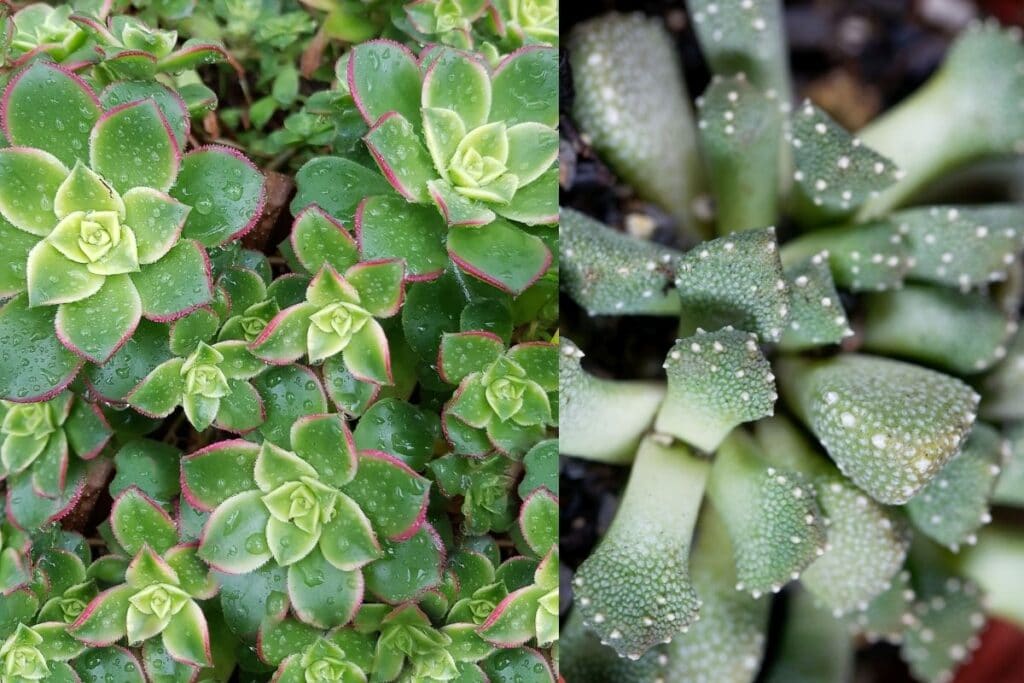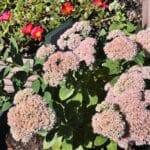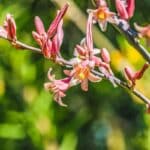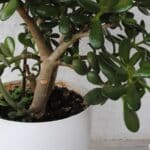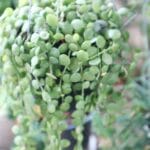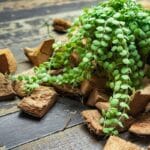The popularity of succulents has increased over the last several years and they’ve become common houseplants among plant enthusiasts.
There are hundreds of species and varieties of Echeveria, Crassula, Sedum, etc. available in the market that you would think you have more than enough to choose from but there are actually more to discover.
- #1. Aeonium haworthii ‘Kiwi’
- #2. Aeonium tabuliforme (Lily Pad Aeonium)
- #3. Adromischus cooperi (Plover Eggs Plant)
- #4. Adromischus cristatus (Crinkle Leaf Plant)
- #5. Adromischus maculatus (Calico hearts)
- #6. Adromischus marianiae ‘Herrei’
- #7. Albuca spiralis ‘Frizzle Sizzle’
- #8. Aloinopsis luckhofii
- #9. Conophytum subglobosum (Living Pebble)
- #10. Cotyledon orbiculata (Pig’s Ear Plant)
- #11. Crassula columnaris
- #12. Crassula marnieriana ‘Hottentot’
- #13. Crassula perforata variegata
- #14. Echeveria gibbiflora ‘Barbillion’
- #15. Echeveria ‘Sea Dragon’
- #16. Echeveria ‘Vincent Catto’
- #17. Euphorbia flanaganii f. cristata (Green Coral)
- #18. Faucaria felina (Pebbled Tiger Jaws)
- #19. Fenestraria rhopalophylla (Baby Toes)
- #20. Frithia pulchra (Fairy Elephant’s Feet)
- #21. Greenovia dodrentalis
- #22. Haworthia cuspidata variegata (Star Window Plant)
- #23. Kalanchoe rhombopilosa (Pies from Heaven)
- #24. Lenophyllum guttatum
- #25. Monadenium ritchiei
- #26. Monilaria moniliformis (Bunny Succulent)
- #27. Othonna capensis (Ruby Necklace)
- #28. Pachyphytum compactum (Little Jewel)
- #29. Senecio barbertonicus ‘Himalaya’
- #30. Xerosicyos danguyi ‘Silver Dollar Plant’
In this guide, we have listed 30 rare and remarkable succulents in unusual shapes, sizes, and colors you may want to consider adding to your growing collection. If you’re looking for the coolest succulents and strange succulents, here they are:
#1. Aeonium haworthii ‘Kiwi’

This aeonium is a tricolor variety, showcasing a rosette of yellow and green variegated leaves with a tinge of rose-red along the edges.
Like most succulents, it can survive both in partial shade or full sun but the striking variegation is more prominent under bright light. It has a mound or shrub-like growth habit and reaches up to 2 feet high (1).
#2. Aeonium tabuliforme (Lily Pad Aeonium)
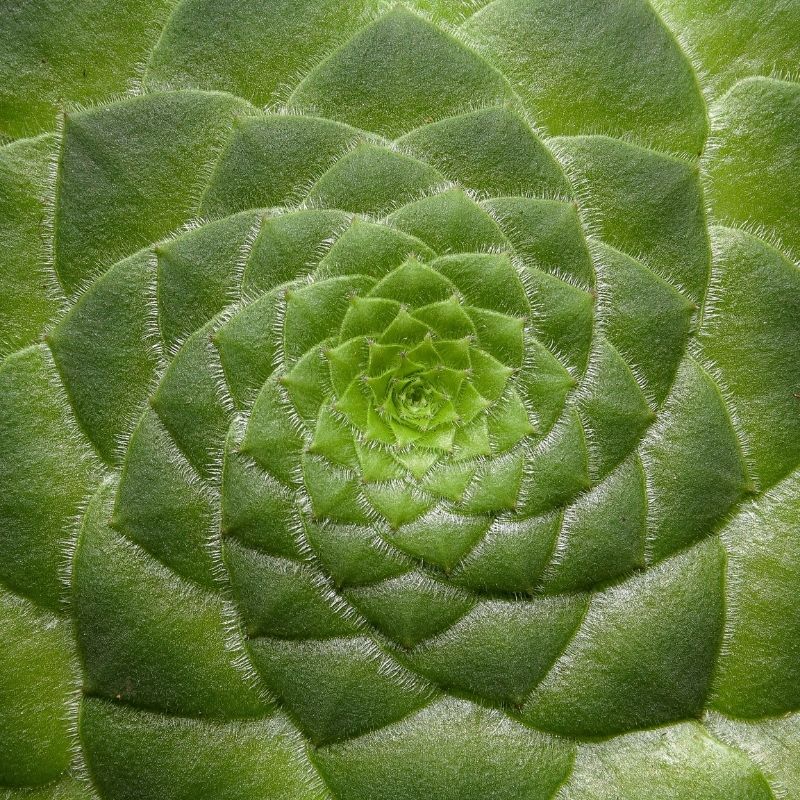
The geometric rosette of this plant is a refreshing sight among rare and unique succulents. It features a big flat cluster of leaves that almost resembles a lily pad, hence the name. Upon maturity, the rosette will form a dome and produce a fleshy stalk of flowers, signaling its death (2).
#3. Adromischus cooperi (Plover Eggs Plant)

This low-growing succulent has plump leaves, rounded at the base and flat and wrinkled at the top. Although technically not egg-shaped, it got its common name from the mottled appearance of the leaves—deep copper marks on grayish-green foliage (3).
#4. Adromischus cristatus (Crinkle Leaf Plant)

Like A. cooperi, this species has the same leaf shape and formation but the wrinkling on the top edge is more prominent. The leaves are deep green to grayish-green with hints of purple and look very attractive when clustered together in a pot (3).
#5. Adromischus maculatus (Calico hearts)
This is another heavily-spotted adromischus but what sets it apart is the leaves that are heart-shaped rather than ruffled. It is native to the Western Cape and Eastern Cape of South Africa and can grow up to 35 cm (14 in) in height.
The plant is low-growing but can develop thick and hard stems as it matures (3).
#6. Adromischus marianiae ‘Herrei’
Growing up to 6 inches tall, this unique succulent has heavily wrinkled plump leaves with pointed tips. Gathered at the base, the leaves look like tiny bitter gourds in purple, green, gray, or mixture. In early fall, the plant will produce a long and thin stalk of tiny pink tubular flowers.
#7. Albuca spiralis ‘Frizzle Sizzle’
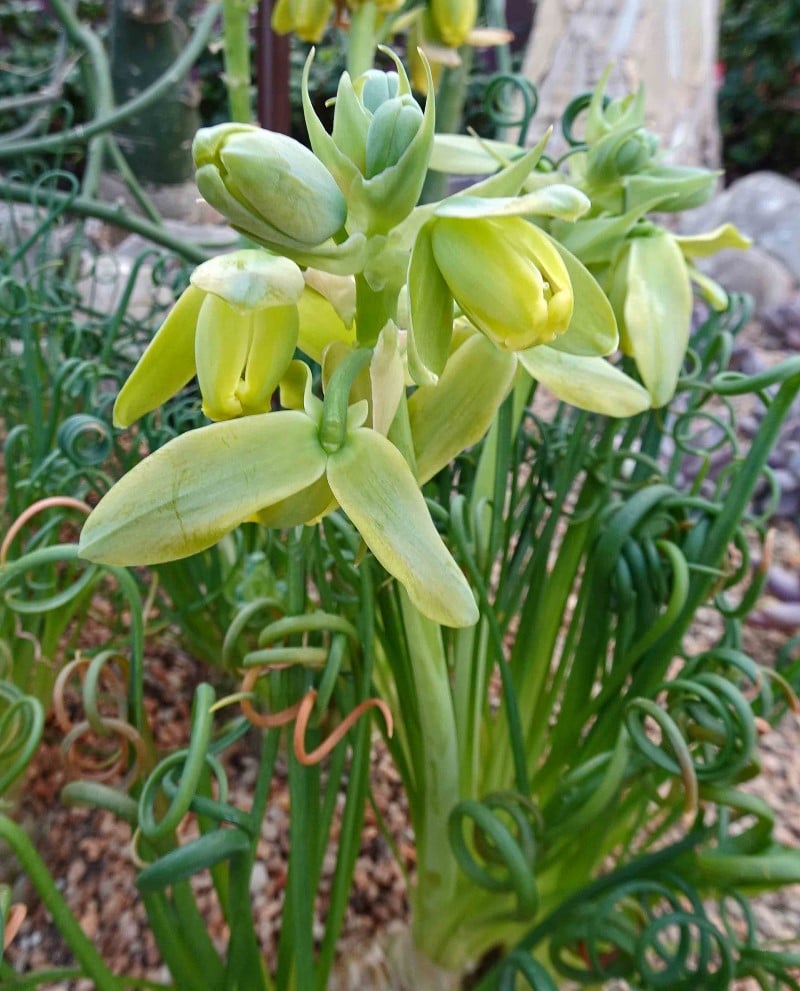
This cultivar of A. spiralis features quirky slender green leaves that spiral or curl at the ends. The leaves are gathered at the base and grow from a thick bulb that protrudes from the soil.
Unlike other succulents, this albuca spiralis plant cannot be reproduced from leaves but by bulb or seeds.
#8. Aloinopsis luckhofii
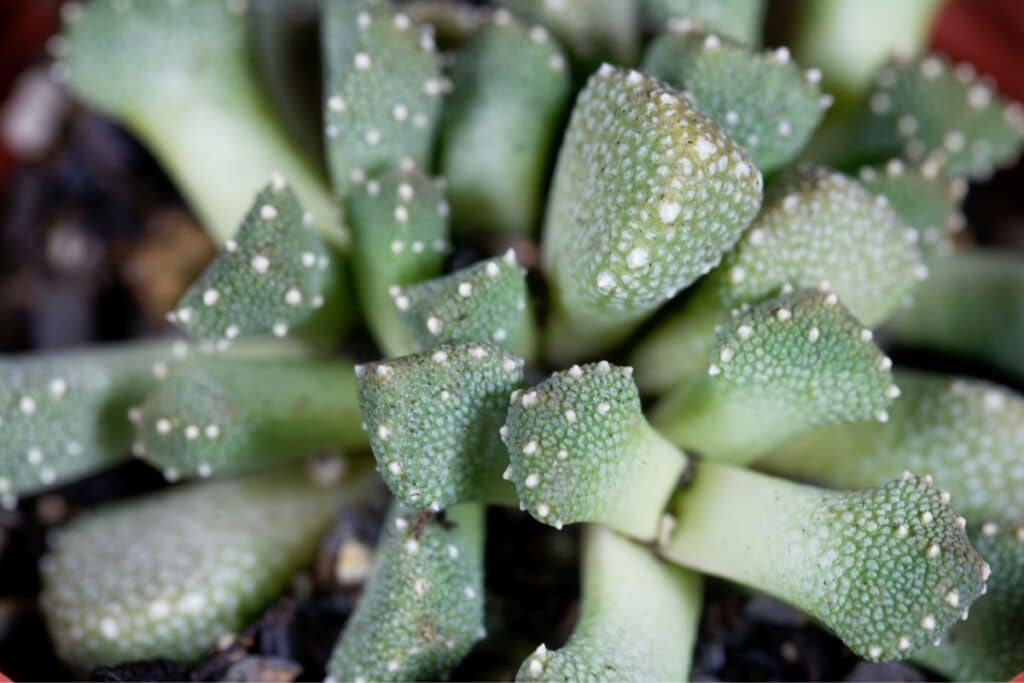
A relative of lithops, this plant forms a thick rosette of plump angular leaves close to the ground. Each grayish-green leaf is covered in textured dots called tubercles and several tiny white protrusions called teeth. It produces bright yellow daisy-like flowers.
#9. Conophytum subglobosum (Living Pebble)
Another lithops relative, Living Pebble has a charming and unusual growth. Naturally found growing in sandy or rocky areas, it can tolerate frost and camouflages with tiny pebbles as the leaves grow rounded and smooth.
It has a pair of leaves that are gray to bluish-green and appear to be merged together with a narrow crevice in the middle where new leaves and the aster-like flower appear.
#10. Cotyledon orbiculata (Pig’s Ear Plant)
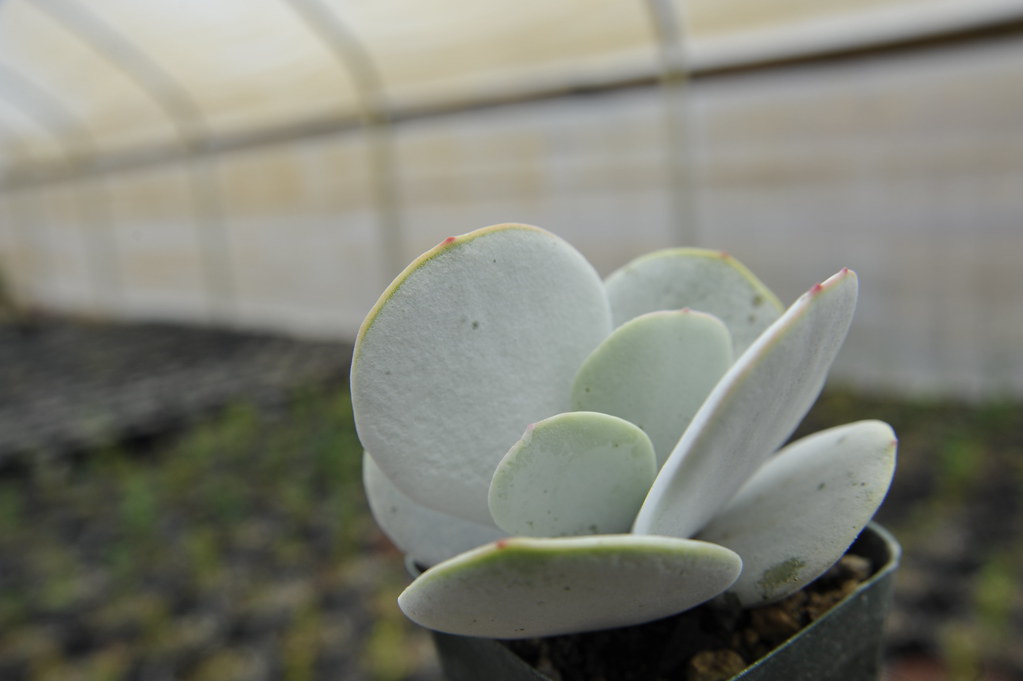
As the name suggests, the leaves of this rare plant look like the ears of a pig. They are flat silvery green and pointed at the top. They also tend to curl in with age but set a complementary background to the plant’s tubular red flowers.
Ironically, the plant is toxic to livestock but is a known remedy for insect bites, boils, and warts.
#11. Crassula columnaris

The stages of growth of this succulent are interestingly varied. It is known to have overlapping leaves that start out as volleyball-like round clusters emerging from the ground.
As the unique plant continues to grow, the leaves pile up like a tower and unfurl its 8 to 10 leaf pairs. A compact mass of small white or pale yellow flowers eventually blooms on top of this cluster.
#12. Crassula marnieriana ‘Hottentot’
One of a few strange-looking types of crassula plants, Hottentot is made of long stacks of angular leaves that look like they were skewered together. They grow upright but the weight as they grow make them look toppled down.
A compact mass actually makes a pot look like it has dreadlocks from afar. This rare succulent produces white inflorescence on top of each leaf cluster.
#13. Crassula perforata variegata

Another crassula with upright stems gathered at the base and angular foliage. This specimen has tinges of red and yellow on the leaves which is the result of a mutation in the more common variety. Like the Hottentot, it is well suited to pots and hanging planters because of the trailing stems (4).
#14. Echeveria gibbiflora ‘Barbillion’
Barbillion is not what readily comes to mind in terms of Echeveria. Although it is rosette-type and comes with a bluish tinge, this hybrid grows leaves that are heavily textured with pink discoloration.
A single rosette can grow bigger than many echeveria making it a desirable indoor specimen.
#15. Echeveria ‘Sea Dragon’
This cultivar has thick ruffled leaves, some with smooth surfaces, others covered in tiny bumps. The leaves are a mixture of green, yellow, and gray with pinkish-orange hints on the ruffles. A single head can grow as big as 10 inches in diameter.
#16. Echeveria ‘Vincent Catto’
This small rosette succulent is a ball-like rosette of fleshy leaves pointed at the tip. They are bluish-green with tinges of red on top. The plant grows close to the ground and produces pups which creates a compact growth.
#17. Euphorbia flanaganii f. cristata (Green Coral)
As the name suggests, this plant resembles the wavy mass of corals. The wide curled stems are attached at the base to a caudex in the ground. The plant looks waxy with tiny leaves growing along the margins.
#18. Faucaria felina (Pebbled Tiger Jaws)
The reason for this rare plant’s name is the toothed appearance of the edges of the leaves. They grow in pairs which open wide to produce new succeeding pairs of thick mottled green leaves. Like lithops, yellow daisy-like flowers appear in the middle of the plant (5).
#19. Fenestraria rhopalophylla (Baby Toes)
The only species under this genus, Baby toes are truly rare. It is a stemless succulent that has long upright fleshy gray-green leaves. On top of each leaf are transparent windows which the plant uses to photosynthesize. In winter, the plant blooms a large golden daisy-like flower (5).
#20. Frithia pulchra (Fairy Elephant’s Feet)
This species may easily be confused with fenestraria, but they have apparent differences in their appearance and growth requirements. Frithia has long leaves that are flat at the top instead of round, hence the common name. The flowers produced are pink or purple and the plant relatively needs more water to grow (3).
#21. Greenovia dodrentalis
This beautiful succulent may be rare but the appearance of the leaves looks very familiar. Each cluster of leaves resembles a rose flower. These drought tolerant plants produce several branches bearing rosettes that when potted, it looks like a bouquet of green rose buds and flowers.
#22. Haworthia cuspidata variegata (Star Window Plant)
Most window plants have green to dark green colors but this variety has leaves with white and yellow striations. The light color accentuates the translucent “windows” on the upper side of the leaves.
#23. Kalanchoe rhombopilosa (Pies from Heaven)
As one of the unique succulents, it is a total diversion from plants’ usual green color. Growing around upright silver stems, the gray-green, almost white leaves are triangular in shape and have pinched edges. Both sides of the leaves are mottled in deep brown.
#24. Lenophyllum guttatum
These weird succulents produce thick leaves in an angular rosette pattern. Each leaf is gray, almost white with speckles of dark red and brown. Some plants develop pinkish tinge when exposed to brighter light.
#25. Monadenium ritchiei
This stubby succulent was previously categorized under Euphorbias because of the tuberculate appearance known to these plants. Its rough stem forms clumps that get compact over time which adds character to the plant. On top are lance-shaped leaves and pink inflorescence that appear in late summer.
#26. Monilaria moniliformis (Bunny Succulent)
This succulent got its common name from the appearance of the young leaves that emerge from the plant’s thick brown stem. They look like a pair of fuzzy green bunny ears, but they eventually elongate into slender upright, often drooping leaves.
#27. Othonna capensis (Ruby Necklace)
Ruby Necklace is a trailing succulent with miniature long thick green leaves. These leaves turn reddish under bright direct sunlight, and they are attached to slender deep purple to ruby red stems. At the end of the stems are contrasting bright yellow aster-like flowers.
#28. Pachyphytum compactum (Little Jewel)
This variety has angular leaves like they were cut to look like crystals. Olive-green in color with hints of purple at the tip, the plant is very attractive as a potted indoor specimen. In summer, a fleshy stalk appears bearing bright pink and orange flowers (5).
#29. Senecio barbertonicus ‘Himalaya’
This senecio boasts a compact clump of needle-like green leaves that when potted, appear like they are overflowing. At the top of each leaf cluster are golden flowers that look like needles too.
#30. Xerosicyos danguyi ‘Silver Dollar Plant’
This succulent is rare and remarkable with its perfectly round silvery green leaves running along string-like stems. The plant is an effective indoor plant, usually left hanging or near a table’s edge where they can showcase their trailing habit.
Some of the plants in this list are the rarest succulents which are not easy to find. To see more common types of succulents you can grow, check our page https://florgeous.com/types-of-succulents/.
References
Reference List:
(1) Sterman, N. Hot Color, Dry Garden: Inspiring Designs and Vibrant Plants for the Waterwise Gardener. Timber Press. 2018. P. 320.
(2) Fowler, A. Plant Love. Hachette UK. 2018. P. 176.
(3) Keen, B. Cacti and Succulents: Step-by-step to Growing Success. Crowood. 2011. P. 128.
(4) Kramer, J. Cacti and Succulents. Abrams. 1977. P. 159.
(5) Bailey, F. & Allaway, Z. Practical Cactus and Succulent Book: How to Choose, Nurture, and Display 200 Cacti and Succulents. Penguin. 2019. P. 224.
Close
*Image by depositphotos.com – ChWeiss, hvoya

